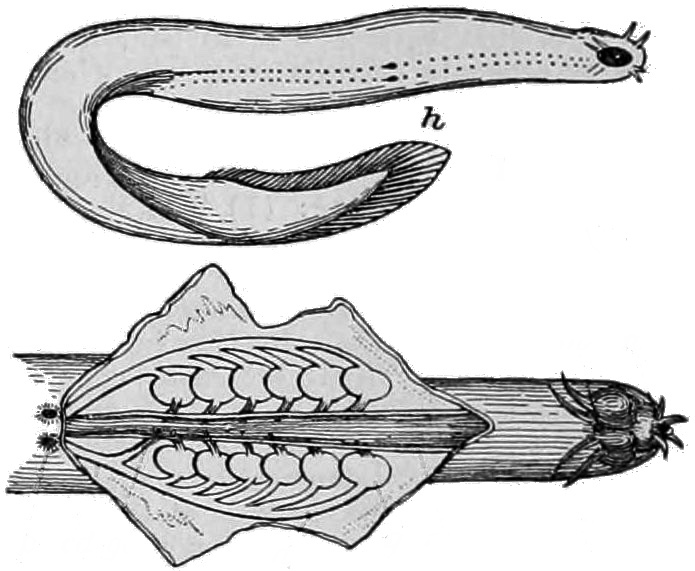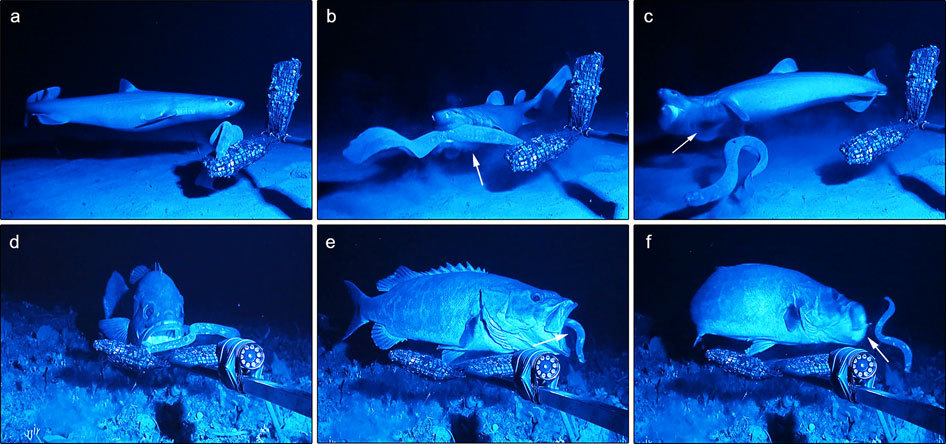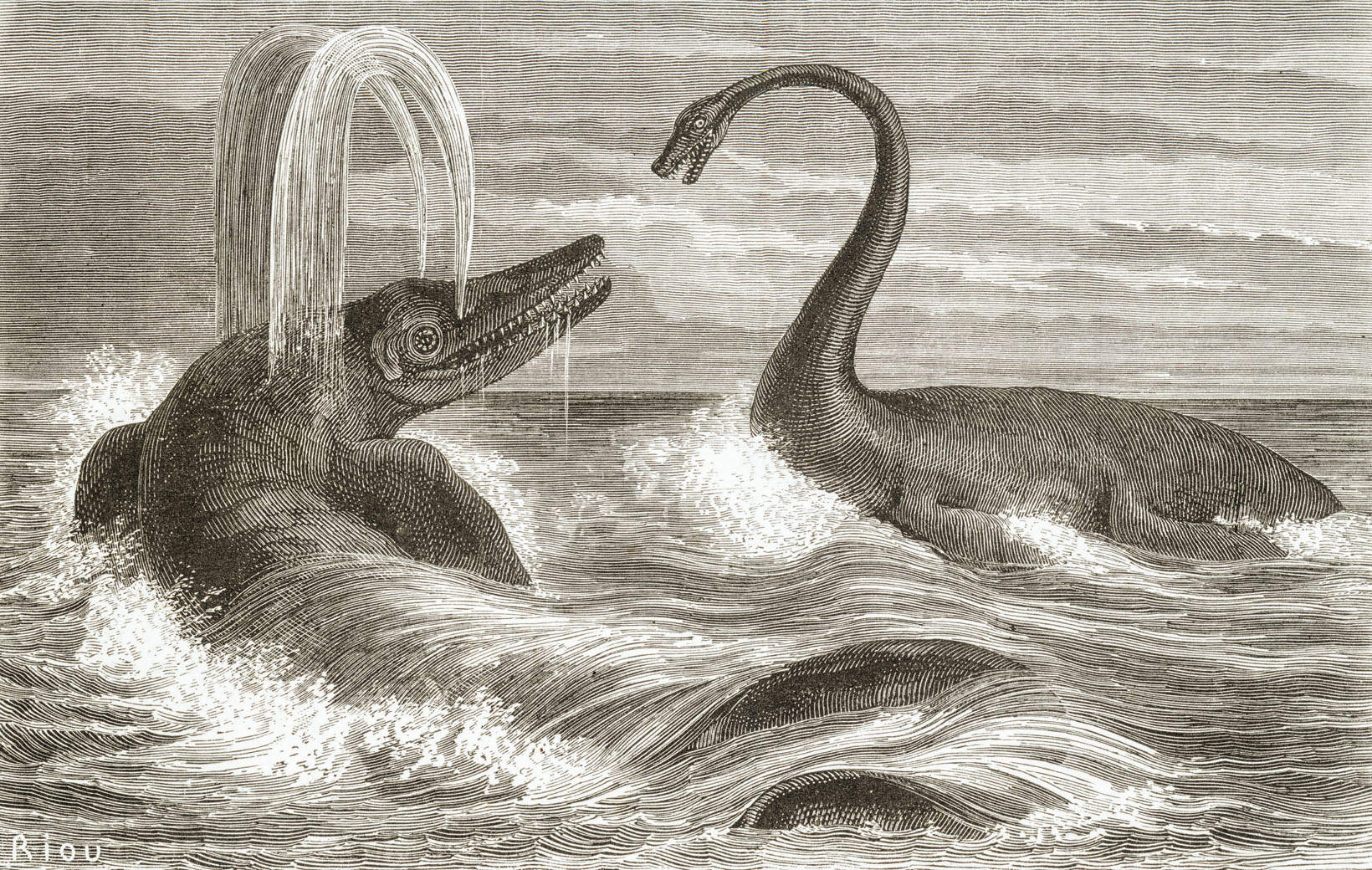|
Tethymyxine
''Tethymyxine'' is an extinct genus of hagfish known from the Late Cretaceous (Cenomanian) of Lebanon. It contains a single species, ''Tethymyxine tapirostrum'', known from a single fossil specimen. It is the oldest crown group hagfish known from fossil remains. It is known from Hjoula, a prominent outcrop of the Sannine Formation. As its specific epithet suggests, this formation consists of sediments from the ancient Tethys Ocean, and is a lagerstätte with numerous extremely well-preserved specimens, including soft-bodied animals such as hagfish that are otherwise rarely fossilized. ''Tethymyxine'''s fossil preserves a row of 133 slime glands, indicating its close relationship to modern hagfish, although it has some notable differences, such as smaller facial tentacles, a more anterior branchial pouch, and a less-expanded caudal fin. The presence of slime glands indicates that hagfish slime may have originally evolved as a defense against now-extinct marine predators such as p ... [...More Info...] [...Related Items...] OR: [Wikipedia] [Google] [Baidu] |
Hagfish
Hagfish, of the Class (biology), class Myxini (also known as Hyperotreti) and Order (biology), order Myxiniformes , are eel-shaped Agnatha, jawless fish (occasionally called slime eels). Hagfish are the only known living Animal, animals that have a skull but no vertebral column, although they do have rudimentary vertebrae. Hagfish are marine animal, marine predators and scavengers that can defend themselves against other larger predators by releasing copious amounts of slime coat, slime from mucous glands in their skin. Although their exact relationship to the only other extant taxon, living group of Agnatha, jawless fish, the lampreys, was long the subject of controversy, genetic evidence suggests that hagfish and lampreys are more closely related to each other than to jawed vertebrates, thus forming the superclass Cyclostomi. The oldest-known stem group hagfish are known from the Pennsylvanian (geology), Late Carboniferous, around Moscovian (Carboniferous), 310 million years ... [...More Info...] [...Related Items...] OR: [Wikipedia] [Google] [Baidu] |
Sannine Formation
The Sannine Formation, also called the Sannine Limestone, is a Cretaceous geologic formation in Lebanon. It is a Konservat-Lagerstätte that contains a high diversity of well-preserved fish, reptiles, and invertebrates from the Tethys Ocean within its three main localities: Haqel (alternatively Hakel or Haqil), Hjoula (alternatively Hadjoula, Hajoula, or Hgula), and Nammoura (alternatively Namoura). It is one of three major Cretaceous lagerstätte in Lebanon, alongside the older (Barremian-aged) Lebanese amber and the younger (Santonian-aged) Sahel Aalma site. The Sannine Formation localities, combined with Sahel Alma, are together referred to as the "Fish Beds" of Lebanon. Description It is primarily Cenomanian in age, with Haqel and Hjoula being late Cenomanian, while the slightly older Nammoura site is middle Cenomanian. Although Lebanon is now a part of Asia, the depositional environment for both formations would have been located off the coast of northern Africa during ... [...More Info...] [...Related Items...] OR: [Wikipedia] [Google] [Baidu] |
Hagfish
Hagfish, of the Class (biology), class Myxini (also known as Hyperotreti) and Order (biology), order Myxiniformes , are eel-shaped Agnatha, jawless fish (occasionally called slime eels). Hagfish are the only known living Animal, animals that have a skull but no vertebral column, although they do have rudimentary vertebrae. Hagfish are marine animal, marine predators and scavengers that can defend themselves against other larger predators by releasing copious amounts of slime coat, slime from mucous glands in their skin. Although their exact relationship to the only other extant taxon, living group of Agnatha, jawless fish, the lampreys, was long the subject of controversy, genetic evidence suggests that hagfish and lampreys are more closely related to each other than to jawed vertebrates, thus forming the superclass Cyclostomi. The oldest-known stem group hagfish are known from the Pennsylvanian (geology), Late Carboniferous, around Moscovian (Carboniferous), 310 million years ... [...More Info...] [...Related Items...] OR: [Wikipedia] [Google] [Baidu] |
Rubicundus
''Rubicundus'' is a genus of hagfishes, the only extant member of the subfamily Rubicundinae. All species in it were formerly classified in ''Eptatretus''. ''R. eos'', ''R. lakeside'', and ''R. rubicundus'' are known from single specimens caught in the Tasman Sea, Galápagos, and Taiwan, respectively. They are named after the distinctive red coloration that all species share. They represent the sister lineage to all other extant lineages of hagfishes, and may represent the sister group to the Cretaceous fossil hagfish ''Tethymyxine'', from which they potentially diverged during the Late Jurassic or Early Cretaceous. Both ''Rubicundus'' and ''Tethymyxine'' share an elongate snout, indented barbels, and numerous slime glands. Phylogenetic studies indicate that the Rubicundinae lineage may have diverged from other extant hagfishes during the Permian The Permian ( ) is a geologic period and System (stratigraphy), stratigraphic system which spans 47 million years, from the end of ... [...More Info...] [...Related Items...] OR: [Wikipedia] [Google] [Baidu] |
Scapanorhynchus
''Scapanorhynchus'' (from , 'shovel' and 'snout') is an extinct genus of shark belonging to the family Mitsukurinidae, that lived during the Cretaceous period, from the Aptian to the end of the Maastrichtian. It is a close relative of the living goblin shark (''Mitsukurina owston''i), the only living member of the family. Later claimed record of ''Scapanorhynchus'', such as those from the Miocene assigned to the species ''S. subulatus'', are highly dubious and may be misidentified sand sharks.Capetta, H., Chondrichthyes II, Mesozoic and Cenozoic Elasmobranchii, vol. 3B of Handbook of Paleoichthyology, Stuttgart, New York: Gustav Fischer Verlag, 1987.Glickman, L. S., and A. O. Averianov. "Evolution of the Cretaceous Lamnoid sharks of the genus Eostriatolamia." PALEONTOLOGICAL JOURNAL C/C OF PALEONTOLOGICHESKII ZHURNAL 32 (1998): 376-384/ref> It was the first mitsukurinid to be described, with the type species (''S. lewisii'') being described nearly 10 years before the living g ... [...More Info...] [...Related Items...] OR: [Wikipedia] [Google] [Baidu] |
Ichthyosaur
Ichthyosauria is an order of large extinct marine reptiles sometimes referred to as "ichthyosaurs", although the term is also used for wider clades in which the order resides. Ichthyosaurians thrived during much of the Mesozoic era; based on fossil evidence, they first appeared around 250 million years ago ( Ma) and at least one species survived until about 90 million years ago, into the Late Cretaceous. During the Early Triassic epoch, ichthyosaurs and other ichthyosauromorphs evolved from a group of unidentified land reptiles that returned to the sea, in a development similar to how the mammalian land-dwelling ancestors of modern-day dolphins and whales returned to the sea millions of years later, which they gradually came to resemble in a case of convergent evolution. Ichthyosaurians were particularly abundant in the Late Triassic and Early Jurassic periods, until they were replaced as the top aquatic predators by another marine reptilian group, the Plesiosauria, i ... [...More Info...] [...Related Items...] OR: [Wikipedia] [Google] [Baidu] |
Early Cretaceous Fish Of Asia
Early may refer to: Places in the United States * Early, Iowa, a city * Early, Texas, a city * Early Branch, a stream in Missouri * Early County, Georgia * Fort Early, Georgia, an early 19th century fort Music * Early B, stage name of Jamaican dancehall and reggae deejay Earlando Arrington Neil (1957–1994) * Early James, stage name of American singer-songwriter Fredrick Mullis Jr. (born 1993) * ''Early'' (Scritti Politti album), 2005 * ''Early'' (A Certain Ratio album), 2002 * Early Records, a record label Other uses * Early (name), a list of people and fictional characters with the given name or surname * Early effect, an effect in transistor physics * Early, a synonym for ''hotter'' in stellar classification In astronomy, stellar classification is the classification of stars based on their stellar spectrum, spectral characteristics. Electromagnetic radiation from the star is analyzed by splitting it with a Prism (optics), prism or diffraction gratin ... See also * * ... [...More Info...] [...Related Items...] OR: [Wikipedia] [Google] [Baidu] |
Mesozoic Jawless Fish
The Mesozoic Era is the era of Earth's geological history, lasting from about , comprising the Triassic, Jurassic and Cretaceous Periods. It is characterized by the dominance of archosaurian reptiles such as the dinosaurs, and of gymnosperms such as cycads, ginkgoaceae and araucarian conifers; a hot greenhouse climate; and the tectonic break-up of Pangaea. The Mesozoic is the middle of the three eras since complex life evolved: the Paleozoic, the Mesozoic, and the Cenozoic. The era began in the wake of the Permian–Triassic extinction event, the largest mass extinction in Earth's history, and ended with the Cretaceous–Paleogene extinction event, another mass extinction whose victims included the non-avian dinosaurs, pterosaurs, mosasaurs, and plesiosaurs. The Mesozoic was a time of significant tectonic, climatic, and evolutionary activity. The supercontinent Pangaea began to break apart into separate landmasses. The climate of the Mesozoic was varied, alternating between ... [...More Info...] [...Related Items...] OR: [Wikipedia] [Google] [Baidu] |
Fossils Of Lebanon
The paleontological sites of Lebanon contain deposits of well preserved fossils and include some species found nowhere else. Notable among these is the Lebanese lagerstätten of the Late Cretaceous age, which contain a well-preserved variety of different fossils. Some fossils date back to the Jurassic period, and younger fossils of mammals from a different site belong to the Miocene through the Pleistocene. History The earliest known account of Lebanese fossils is attributed to Herodotus. The existence of fossil fishes in the Lebanon is referred to by Jean de Joinville. In his ''Histoire de Saint Louis'' he wrote that during the sojourn of King Louis IX of France at Sidon in 1253, just before his return home from the Seventh Crusade, a stone was brought him, European scientists became interested in Lebanese fossils in the 19th century. Locations and fossils There are three major fossil locations in Lebanon: Sahel Alma (fossil site), Sahel Alma, Hajula and Hakel (the latter two b ... [...More Info...] [...Related Items...] OR: [Wikipedia] [Google] [Baidu] |
Late Jurassic
The Late Jurassic is the third Epoch (geology), epoch of the Jurassic Period, and it spans the geologic time scale, geologic time from 161.5 ± 1.0 to 143.1 ± 0.8 million years ago (Ma), which is preserved in Upper Jurassic stratum, strata.Owen 1987. In European lithostratigraphy, the name "Malm" indicates rocks of Late Jurassic age. In the past, ''Malm'' was also used to indicate the unit of geological time, but this usage is now discouraged to make a clear distinction between lithostratigraphic and geochronologic/chronostratigraphic units. Subdivisions The Late Jurassic is divided into three ages, which correspond with the three (faunal) stages of Upper Jurassic rock: Paleogeography During the Late Jurassic Epoch, Pangaea broke up into two supercontinents, Laurasia to the north, and Gondwana to the south. The result of this break-up was the emergence of the Atlantic Ocean, which initially was relatively narrow. Life forms This epoch is well known for many famous types of d ... [...More Info...] [...Related Items...] OR: [Wikipedia] [Google] [Baidu] |






